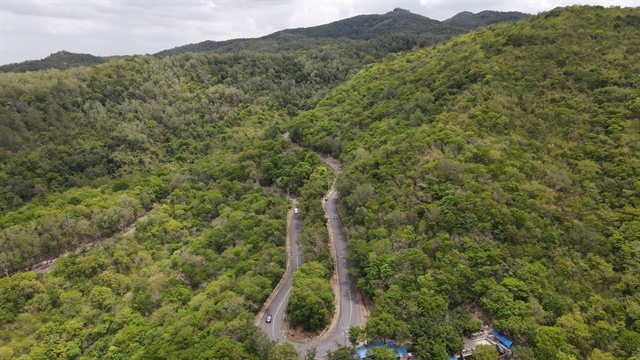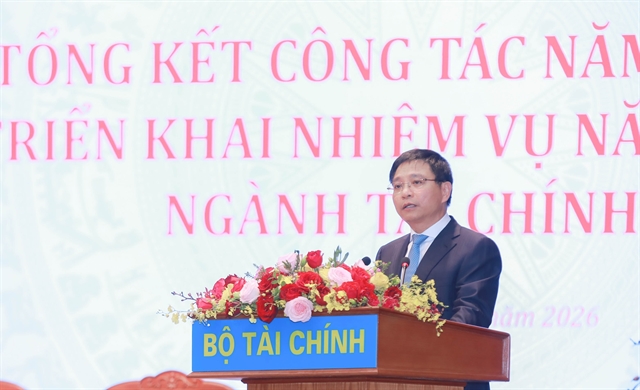 Environment
Environment

 |
| A view of a protection forest in Bà Rịa-Vũng Tàu Province. Việt Nam has gained significant achievements in desertification prevention, including raising the forest coverage from 27.8 per cent in 1993 to 42 per cent at present. — VNA/VNS Photo |
HÀ NỘI — In the combat against desertification, Việt Nam has step by step obtained dual results as it has successfully prevented land degradation and brought economic benefits to farmers.
This year’s World Environment Day (June 5) is themed “Land restoration, desertification and drought resilience”, aiming to appeal to countries around the globe to join hands in restoring land, preventing desertification, and improving drought resilience to slow down the climate change process, protect the nature while improving livelihoods and food security for billions of people worldwide.
Land degradation accelerates climate change and biodiversity loss, and also contributes to drought, forest fire, involuntary migration as well as the emergence of zoonotic diseases.
Phạm Văn Điển, Rector of the Việt Nam National University of Forestry, said desertification is the final stage of land degradation. To farmland, degradation in Việt Nam is divided into four levels: the land at risk of degradation – about 6.7 million ha, the one showing signs of degradation – about 2.4 million ha, the land already degrading – about 1.3 million ha, and the area degrading and turning into artificial desert – several thousands of ha.
The desert area in Việt Nam is inconsiderable, which is attributable to the implementation of fundamental and strategic land protection measures such as afforestation along with reasonable farming and land use in which land users’ rights and obligations are properly handled.
The Ministry of Agriculture and Rural Development said Việt Nam has gained significant achievements in desertification prevention. From the modest forest coverage of 27.8 per cent in 1993, the rate has increased to 42 per cent at present compared to the world average of 31 per cent.
The forestry sector has continued implementing strategies, programmes, and plans to improve forest quality and ecosystem by protecting natural forests (10.3 million ha) and planting large-timber forests (over 300,000ha at present, which needs to reach about 1 million ha by 2030). These moves not only help to preserve the nature or maintain and enhance soil fertility but also supply materials for forestry product processing and trading.
In 2023, the World Bank, for the first time, paid US$51.5 million for Việt Nam’s forest carbon credits – a reward for the country's efforts in protecting and developing forests and combating land degradation in the north-central region. That turned Việt Nam into the first in East Asia and Pacific to receive a payment for emission reduction results from the WB’s Forest Carbon Partnership Facility (FCPF).
Land degradation prevention and control are not limited to the forestry sector but have also been carried out in agriculture. Developing ecological and organic agriculture is an appropriate approach that is being promoted, and also reflects an environmentally friendly economic mindset.
Điển emphasised that thanks to tireless efforts, the cultivation of such plants as dragon fruit, grape, garlic, and macadamia in arid and degraded land areas is generating profits for farmers. Many coastal areas in the central region are revitalising, transforming from “sand” to “soil” with the endless green of “phi lao” (Casuarina equisetifolia) and “keo la liem” (Acacia crassicarpa) along the coastline.
Desert agriculture in Bình Thuận
Bình Thuận Province, located on the southern coast of the central region, is characterised by a hot-dry climate, arid land, along with surface desertification and saltification in many places, seriously affecting local people’s life and livelihoods.
Facing that fact, the local authorities have taken steps to help farmers gradually adapt to adverse impacts of harsh natural conditions and climate change. In particular, the model of desert agriculture applying modern technology has taken shape and obtained encouraging results.
The province is promoting large-scaled farming connected with preservation, processing, and sale under value chains. Models of production coordination for key products have been formed and utilised drip irrigation technology to save water.
With abundant land reserves and a water area large enough for expanding cultivation, livestock farming and aquaculture, Bình Thuận has boosted industrial and semi-industrial animal husbandry at the same time with controlling diseases and protecting the environment.
Farm economy has been facilitated to green vacant land areas and bare hills, tap into uncultivated areas, and improve the ecological environment. A number of businesses and farm owners have applied scientific and technological advances to develop beef and dairy cattle farming, monitor animal health, detect and prevent animal and plant diseases, and harvest, process and preserve agricultural products such as meat, eggs, and milk.
Over the past years, the local irrigation system has also received more investment. As a result, with over 1,800km of irrigation canals, Bình Thuận now basically ensures sufficient water supply for agriculture.
Aside from its own efforts, the province is also calling for more investment in smart and hi-tech agriculture projects that apply automated and water-saving irrigation technology, biological pest control measures, as well as technological advances for post-harvest preservation so as to build value chains in line with international standards, adapt to climate change, and generate high economic values. — VNS




